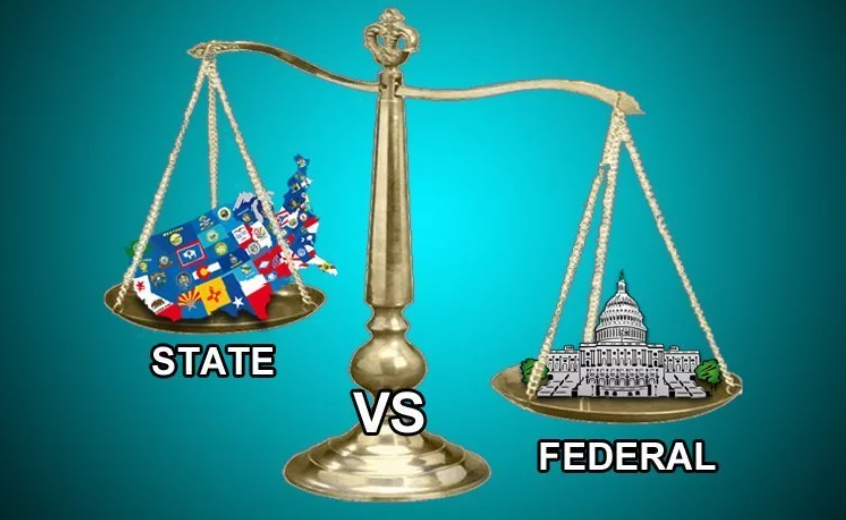In the US, taxes are levied by federal, state and sometimes local governments. The only similarity between federal and state income taxes is that they apply a rate to taxable income. However, they differ significantly on the type of income that is taxed, the deductions and tax credits that are allowed, the rates of taxation and how the rates are applied. Here are the differences.

State Income Taxes
Each state has its own way of levying taxes.
1. Wyoming, Washington, Texas, South Dakota, Nevada, Florida and Alaska do not impose income tax at all.
2. Tennessee and New Hampshire, do not tax salaries and wages, but only interest income and dividends. Tennessee is in the process of repealing this taxation by 2022.
3. Nine states have a flat tax system, i.e. they impose one rate to all levels of income. These are Utah (4.95%), Colorado (4.63%), Pennsylvania (3.07%), Illinois (4.95%), North Carolina (5.25%), Indiana (3.23%), Michigan (4.25%), Kentucky (5%), and Massachusetts (5.05%).
4. The rest of the states have a progressive income tax system in which higher levels of income are taxed at a higher percentage rate like is done at federal level. Kansas and Rhode Island have three tax brackets, and Hawaii has 12 tax brackets. Arizona’s progressive tax system has the highest top tax rate of 4.54%, North Dakota 2.9% and California 13.3% (for singles with taxable income over $1 million and married couples with incomes over $1,145,960.
5. Some states tax Social Security Benefits and pension income, but others don’t.
6. No state taxes income from U.S. Treasury securities, including savings bonds.
Federal Income Tax
1. The Tax Cuts and Jobs Act (TCJA) made significant changes to the U.S. Internal Revenue Code in 2018. Now there are seven marginal tax brackets of 10%, 12%, 22%, 24%, 32%, 35%, and 37% at federal level.
2. For the 2020 tax year, the top rate of 37% will be applied from $518,401 in taxable income for singles and from $622,051 in income for married couples who file jointly.
3. Taxpayers can either claim a standard deduction or itemize their deductions. The TCJA increased the standard deduction considerably, making it more helpful for many taxpayers to simply use that amount. It’s $12,400 for single taxpayers, $18,650 for heads of households, and $24,800 for married couples filing jointly for the 2020 tax year.
4. Pension and Social Security income are taxable at federal level.
5. Income from U.S. Treasury securities, including savings bonds, is taxable at federal level.
State Tax vs Federal Tax example
Here is what a person who reports $75,000 earned income plus $3,000 interest income will pay in 2020.
To the federal government she will pay $988 or 10% of the first $9,875, $3,630 or 12% of the next $30,250, and $8,332 or 22% of the balance, a total of $12,950.
To the state of New Hampshire, that person would only pay 5% of interest income i.e. $150 because that state doesn’t tax earned income.
In Illinois, which taxes all income, the flat rate of 4.95% is applied to the total of $78,000 taxable income. So, the taxpayer would pay $3,861 in state taxes.
